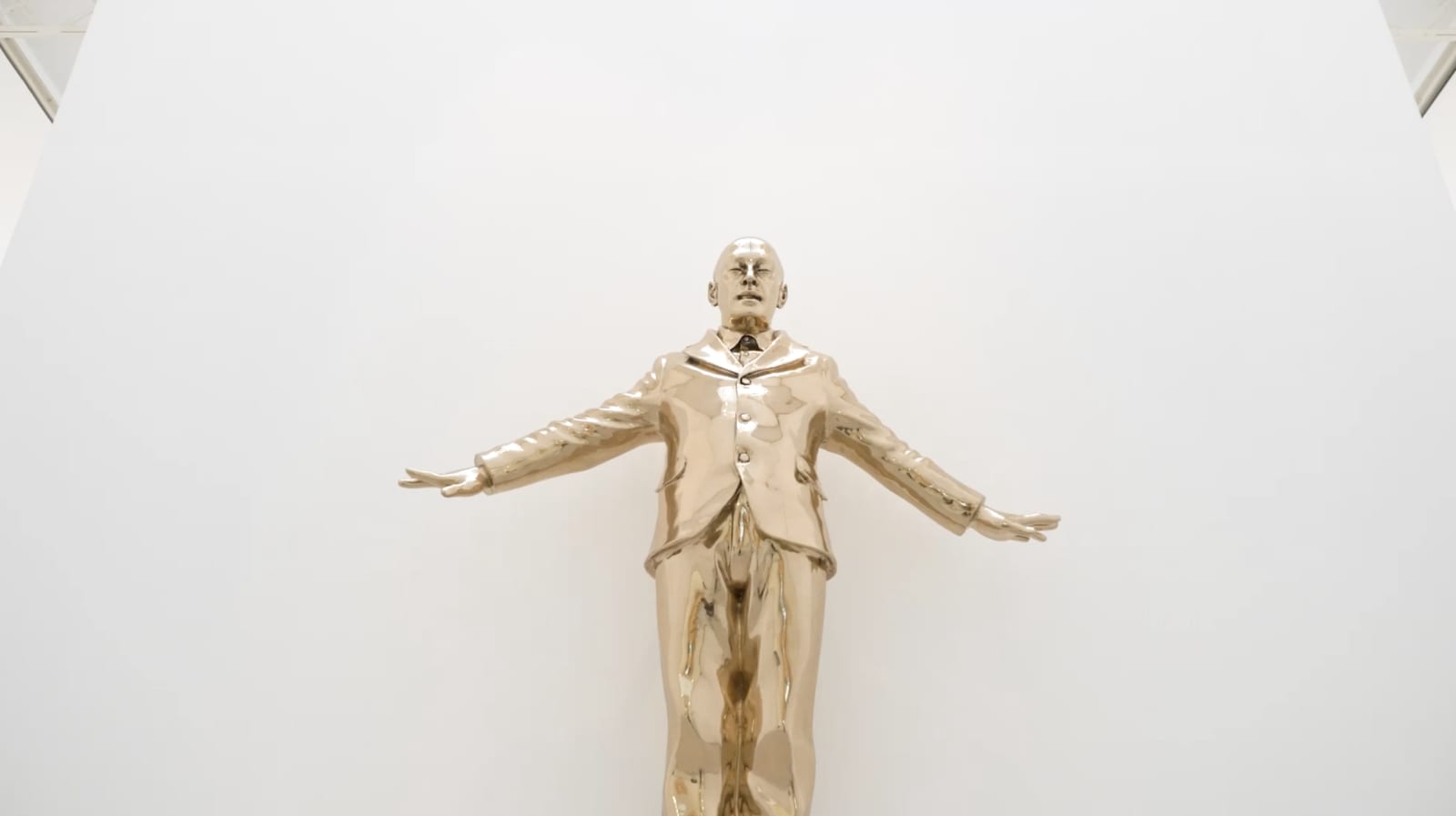Sometimes, late in the afternoon, the studio turns almost completely dark, which is almost perfect to paint. […] Everything surrounding me is emptied, everything almost loses gravity, like floating or falling or daydreaming. This might be 1 of the reasons why most of the space surrounding the heads & most of the canvas is left untouched. When a head stands alone, I work better. No need to add anything. It’s just more. — Not Vital

Vital began an intensive exploration of portraiture through painting 16 years ago, at the age of 60, after a long period of focus on sculpture. Through a process of application and reduction, he repeatedly adds and then removes layers of oil paint until the figure seems to emerge from the material.
3 Self-portraits, 2023Oil on canvas
210 x 150 cm (82.68 x 59.06 in)

Oil on canvas
210 x 150 cm (82.68 x 59.06 in)

A sculpture, moulded in plaster in the form of the Swiss mountain Piz Lagrev, which looms above Vital’s home, is presented atop a piece of antique wooden furniture, sourced locally and typical of the Engadin. The fine grain and chalky white colouration of the plaster evokes the layer of snow that coats the alpine landscape for a large part of the year.
Piz Lagrev, 2012Plaster
105 x 130 x 70 cm (41.34 x 51.18 x 27.56 in)

After dancing publicly for the last time in 1919, Nijinsky, struggling with schizophrenia, spent the final 30 years of his life in and out of psychiatric hospitals. In 1939, a dancer from the Paris Opera Ballet was brought to his sanatorium in Switzerland to perform one of Nijinsky’s best-known choreographies in the hope it might inspire him to dance again.
Nijinsky, 2024Bronze, 93 kg
170 x 155 x 73 cm (66.93 x 61.02 x 28.74 in)

Photograph
Victoria & Albert Museum, London

In his conception of these seemingly uninhabited backgrounds is a crossing of references: the velvety layering of Mark Rothko’s Untitled (White, Blacks, Grays on Maroon) (1963; collection of the Kunsthaus Zürich), and the ineffable, sorrowful beauty of Diego Velázquez’s The Crucified Christ (c. 1632; collection of the Museo del Prado, Madrid) emerging, glowing from a sombre ground.
3 Self-portraits, 2023Oil on canvas
210 x 150 cm (82.68 x 59.06 in)


He adds to this effect by covering each painting with glass, like Francis Bacon before him, without which he considers them ‘naked’. Vital considers himself a sculptor even when painting, and this glass, which reflects the surrounding environment, gives each painting a sculptural sense of three-dimensionality and encourages the viewer to physically negotiate the act of looking and to reconsider the place of the self within its surroundings. As Vital explained to Hans Ulrich Obrist: ‘It attracts, but also it inflects and reflects. It keeps you away, gives you the right distance to look at a painting.’
3 Self-portraits, 2023Oil on canvas
210 x 150 cm (82.68 x 59.06 in)
The valorisation of the innate properties of material found in the sculpted plaster mountain is echoed in the Dali Stones, sculptural works made from white marble, which are sliced open to reveal the hidden vein-like lines within the rock’s texture following a technique traditionally used in the Yunnan province in southern China.

The striations that emerge when the stone is cut along the correct axis trace out forms resembling rugged mountainous landscapes. The depth of these sculptures, some of which begin wider at one end before tapering off, recalls the deeply set windows typical of the stone facades of the Engadin valley.
Landscape, 2023Marble and plaster
66 x 55 x 25 cm (25.98 x 21.65 x 9.84 in)


The ephemeral material and substances affixed to the paper create delicate, fugacious impressions of people and scenes. As the artist says, ‘I want to arrive with these paintings at a certain moment of feeling. It doesn’t actually have to do so much about form or colour, but it has to do very much with emotions.’
Everton, 2014Oilstick and tape on paper
43.2 x 35.6 cm (17.01 x 14.02 in)
































































































































































































